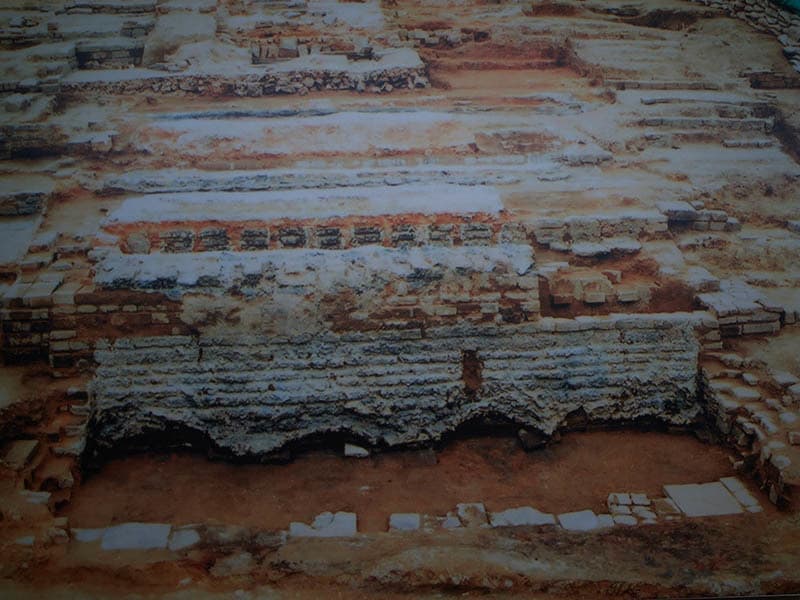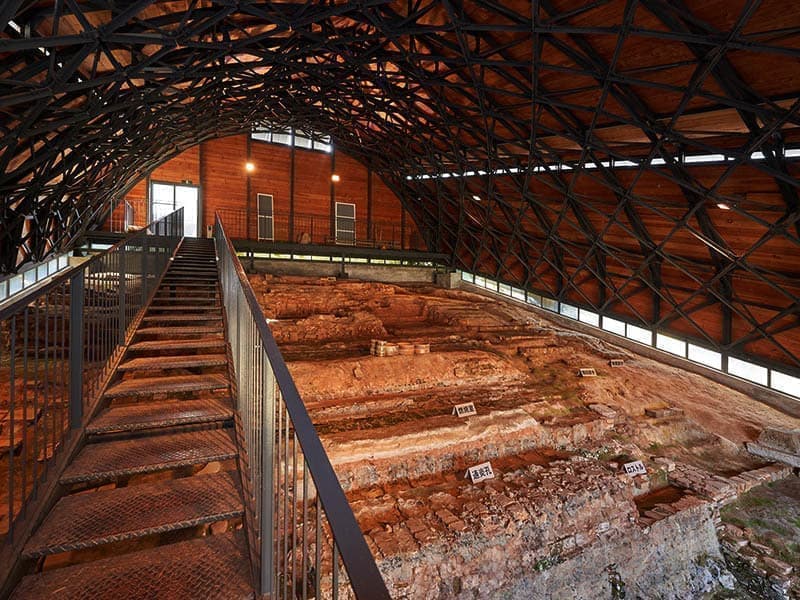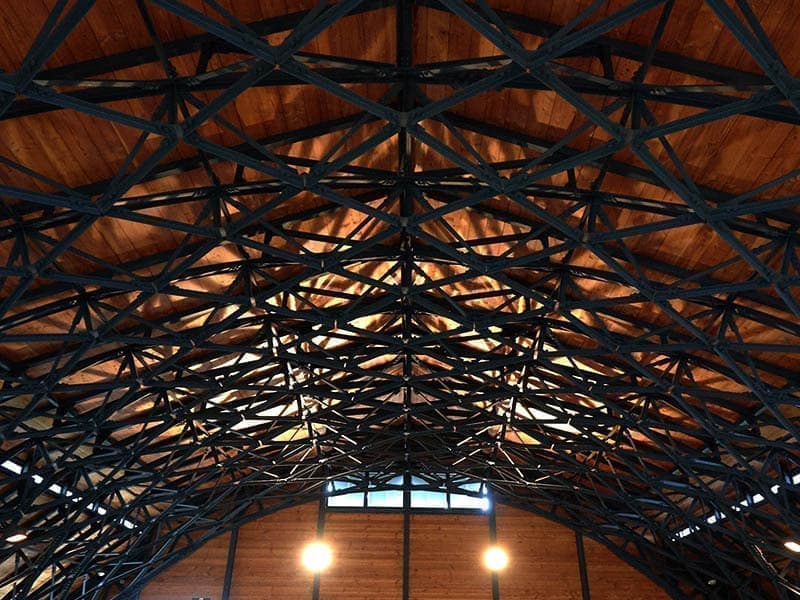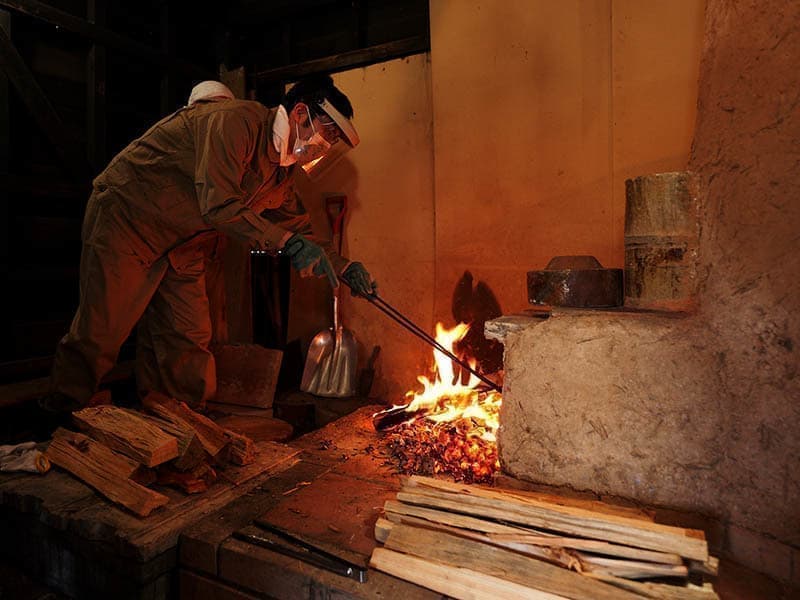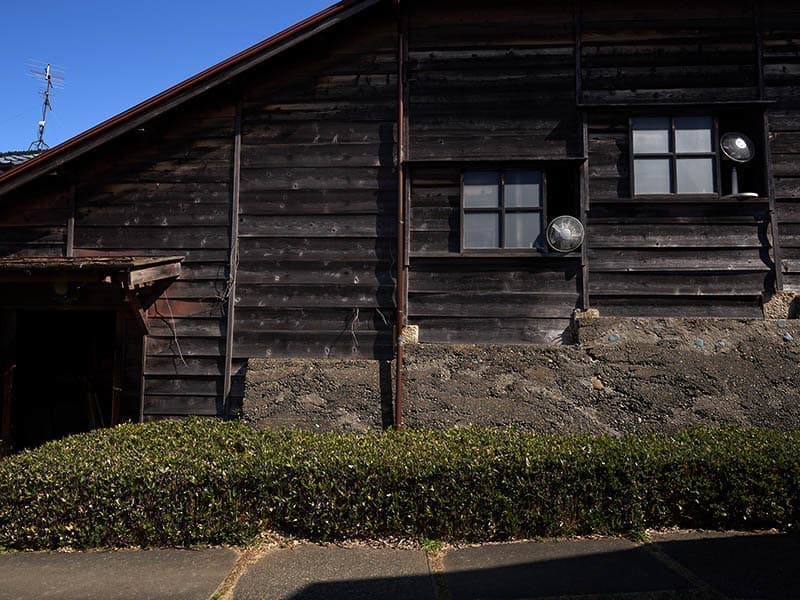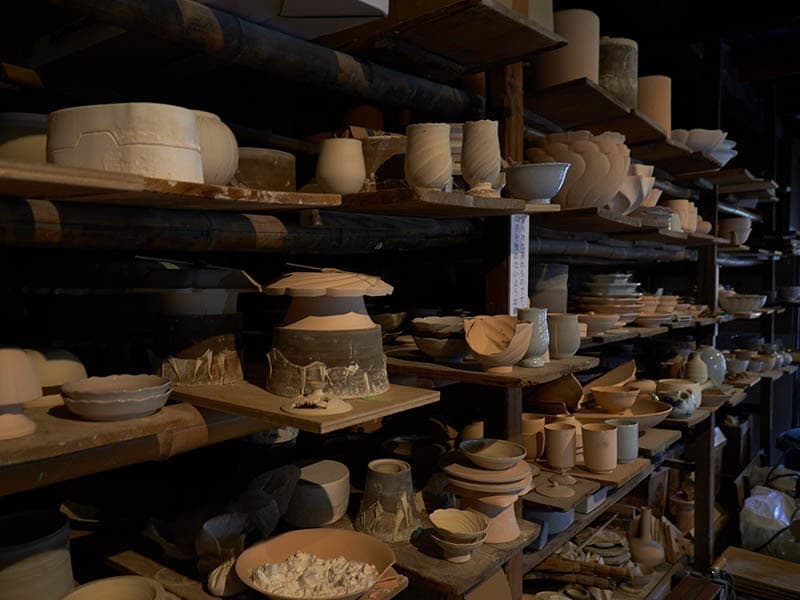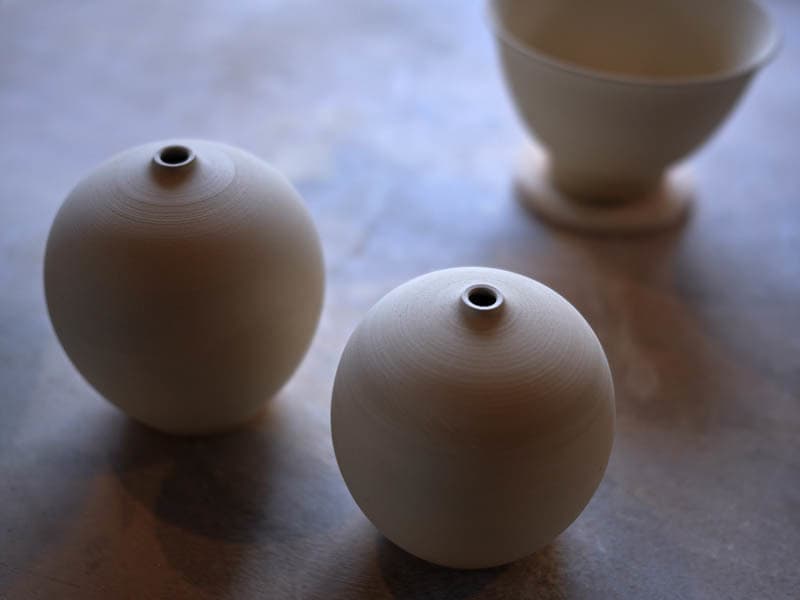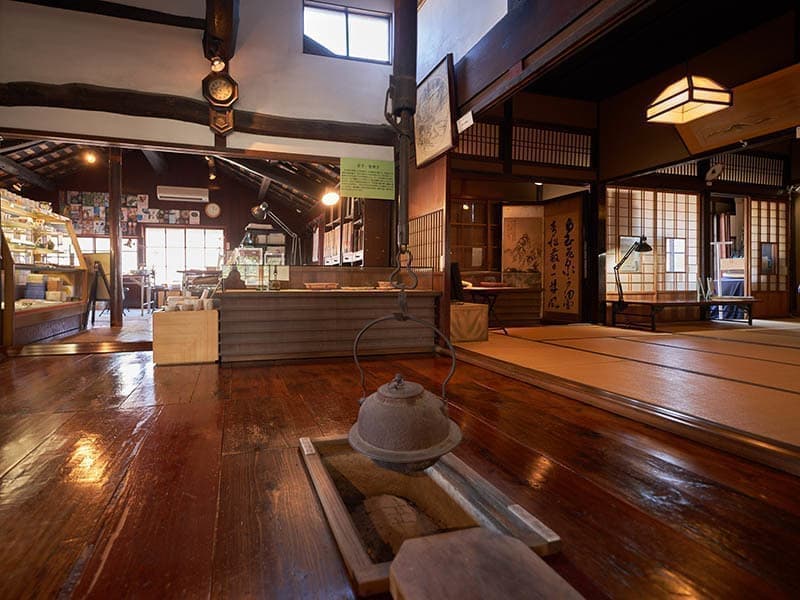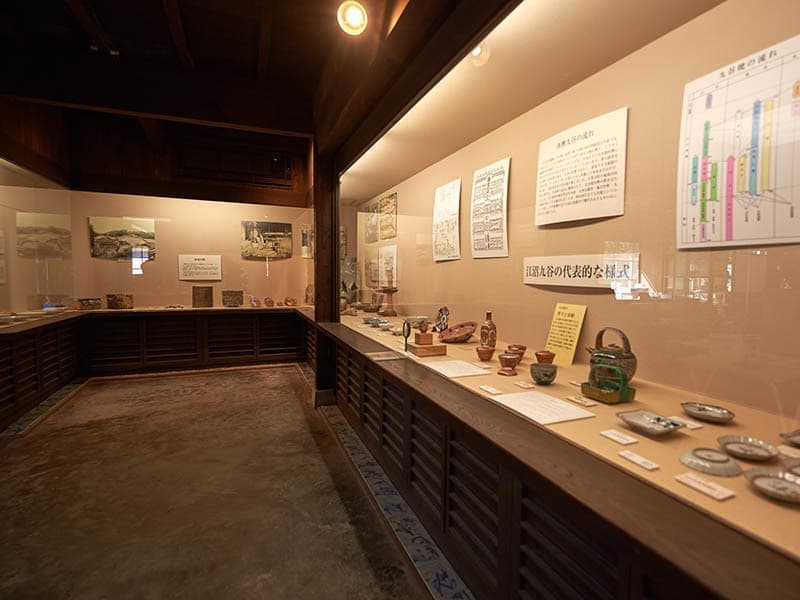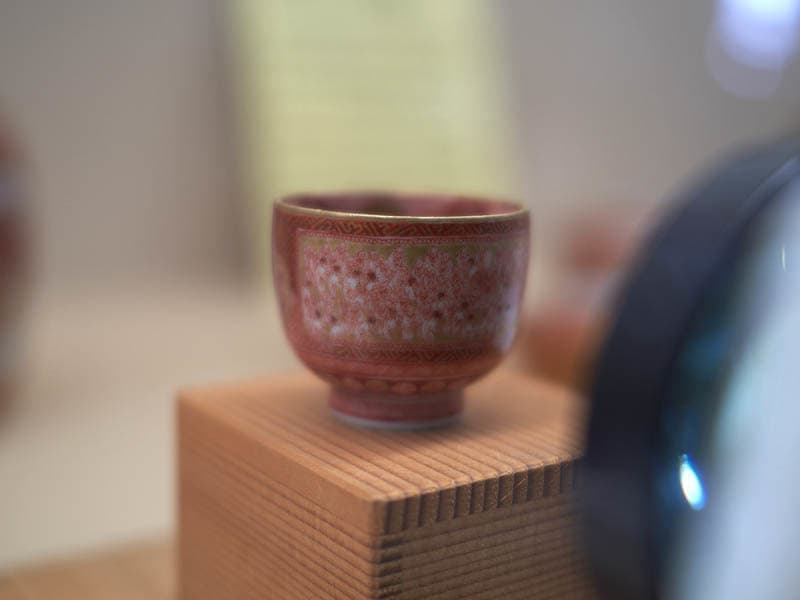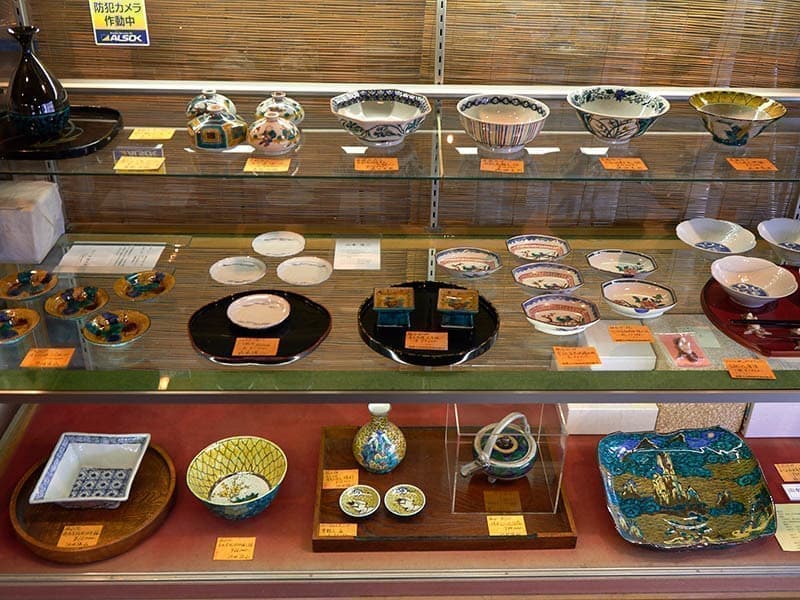This is the site of a historic kiln that has been used ever since production of Kutani porcelain was restarted in the late Edo period in 1824. To pass this cultural legacy on to future generations, the kiln site was turned into a museum in 2002.
In addition to displaying the remains of a climbing kiln that was used for over a century, the museum also features a new climbing kiln built to replace it and the former home of the kiln master, which is still used as a pottery workshop today.
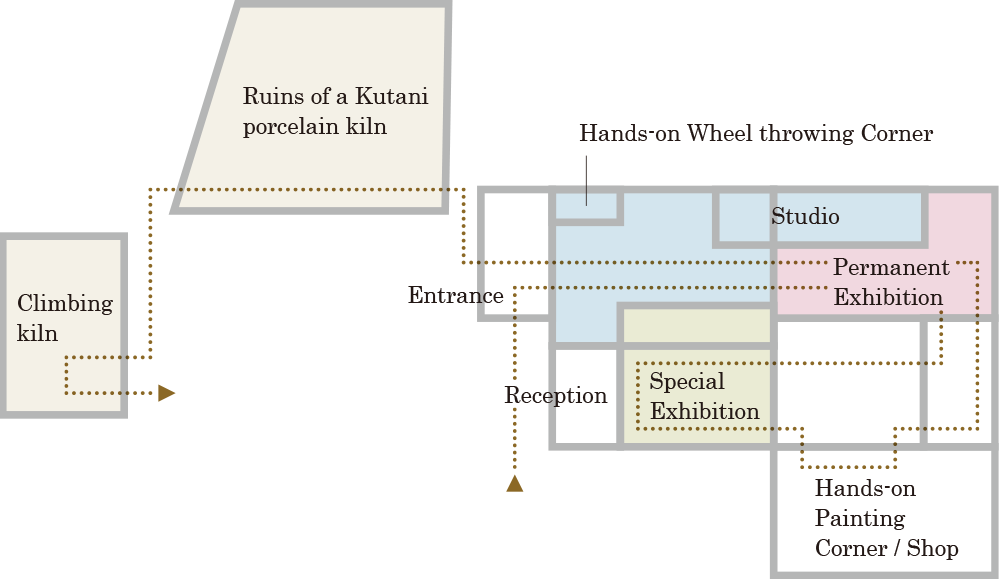
YOSHIDAYA Climbing Kiln 1826-1940
In 1824, a rich merchant and erudite man from Daishoji Domain, YOSHIDAYA Den’emon (1752-1827) and his seventies dreamed of reviving the lost porcelain, built another kiln in the village of Kutani and succeeded in it. In 1826, YOSHIDAYA moved his kiln at its current location. While the operations at the Yoshidaya kiln ceased in 1831, the climbing kiln itself was repeatedly repaired at its existing site and was used by various kiln owners for 100 years, right up until 1940, playing a key role in the developments of pottery in Kaga. It was reclaimed in 1940 due to its age and falling demand, while 1992 saw the start of excavations that revealed some floor parts. While the original kiln had four chambers, it was expanded to six in the early 20thcentury to cope with the rise in demand for porcelain. This allowed it to fire about 10,000 pieces at a time.
Ruins of a Kutani porcelain kiln
A climbing kiln is a type of kiln for firing ceramics. It comprises several firing rooms arranged in step-like terraces on a slope and clay is wood-fired in the combustion room, which is located at the very bottom.
The floor parts of the excavated climbing kiln are maintained and are open to the public. It has been designated a National Historical Site as important ruins that tell the history of Kutani-yaki.
Since the kiln’s protective shelter was destroyed during land reclamation, contemporary architect NAITO Hiroshi (1950-) built the roof structure. It uses a steel truss shell to cover the entire site as a way to both protect and display it. It was designed so that its entire weight could be supported by four supporting piles strategically placed to not disturb the kiln remains.
Climbing Kiln 1940-1965
This climbing kiln was built in 1940 to succeed the Yoshidaya climbing kiln next door. While a small kiln, with only three chambers, its structure is believed to be largely identical to its predecessor, providing valuable clues about the lost upper structure of the Yoshidaya kiln. In use until about 1965, the kiln has remained almost unchanged since then, aside from the loss of the rear chimney. It is believed to be the oldest remaining Kutani-yaki climbing kiln.
Over about a two-month period, around a thousand pieces would be loaded into the kiln. Once full, it took thirty hours for firing, then another thirty for cooling. The fuel was red pine, which burns hot, between 3,000 and 5,000 logs would be required for a firing. Climbing kilns are seldom used today, with most potters preferring gas or electric ones.
Former Residence / Workshop
This was where the home and workshop of the kiln master stood for many years. In 1897, a traditional house built in the mid-Edo period was relocated here to serve as the office of the company that owned the kiln then.
To preserve this historic building, it was restored in 2001 to close to how it would have been when first moved here.
The reddish roof tiles are typical of the traditional Kaga folk house. The area from the former entrance to the reception room retains its original appearance. The bedroom was later turned into the kiln master’s workshop, where each step in the process of making Kutani porcelain, from turning on the wheel to painting, could be carried out.
The house’s original location and date of construction are unknown, but from its structural features, and things like adze marks on the floor planks and pillars, it is believed to the oldest remaining house in the area.
The Shimada Juraku Kiln, which used this as its workshop until its restoration, still produces ceramics from its new kiln next door.
In addition to the permanent exhibition area that showcases the history and tools of Kutani-yaki, there is a room where special exhibitions are held, and the works of local contemporary artists are sold.
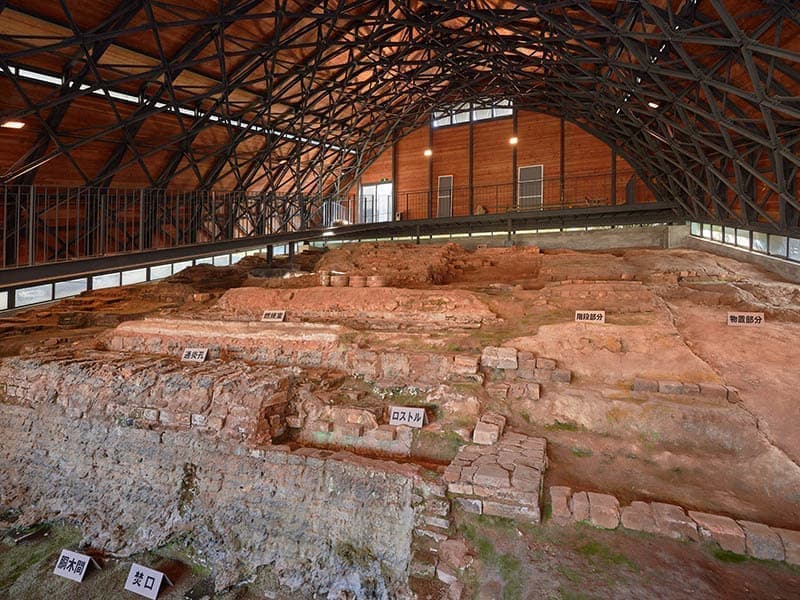
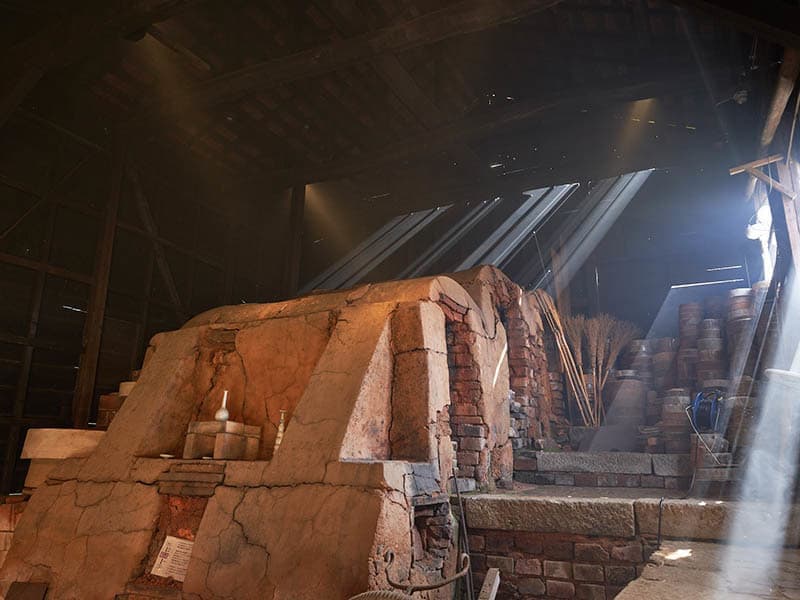
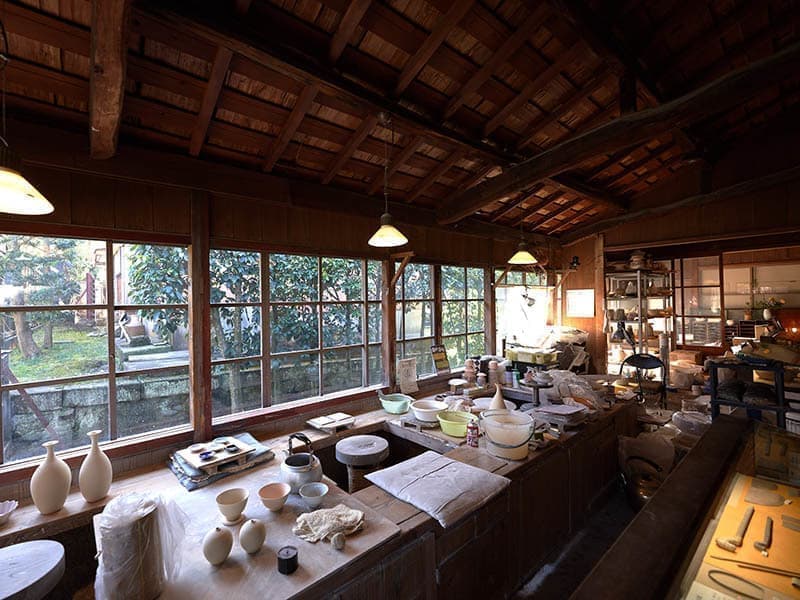
YOSHIDAYA Climbing Kiln 1826-1940
In 1824, a rich merchant and erudite man from Daishoji Domain, YOSHIDAYA Den’emon (1752-1827) and his seventies dreamed of reviving the lost porcelain, built another kiln in the village of Kutani and succeeded in it. In 1826, YOSHIDAYA moved his kiln at its current location. While the operations at the Yoshidaya kiln ceased in 1831, the climbing kiln itself was repeatedly repaired at its existing site and was used by various kiln owners for 100 years, right up until 1940, playing a key role in the developments of pottery in Kaga. It was reclaimed in 1940 due to its age and falling demand, while 1992 saw the start of excavations that revealed some floor parts. While the original kiln had four chambers, it was expanded to six in the early 20thcentury to cope with the rise in demand for porcelain. This allowed it to fire about 10,000 pieces at a time.

Ruins of a Kutani porcelain kiln
A climbing kiln is a type of kiln for firing ceramics. It comprises several firing rooms arranged in step-like terraces on a slope and clay is wood-fired in the combustion room, which is located at the very bottom.
The floor parts of the excavated climbing kiln are maintained and are open to the public. It has been designated a National Historical Site as important ruins that tell the history of Kutani-yaki.
Since the kiln’s protective shelter was destroyed during land reclamation, contemporary architect NAITO Hiroshi (1950-) built the roof structure. It uses a steel truss shell to cover the entire site as a way to both protect and display it. It was designed so that its entire weight could be supported by four supporting piles strategically placed to not disturb the kiln remains.

Climbing Kiln 1940-1965
This climbing kiln was built in 1940 to succeed the Yoshidaya climbing kiln next door. While a small kiln, with only three chambers, its structure is believed to be largely identical to its predecessor, providing valuable clues about the lost upper structure of the Yoshidaya kiln. In use until about 1965, the kiln has remained almost unchanged since then, aside from the loss of the rear chimney. It is believed to be the oldest remaining Kutani-yaki climbing kiln.
Over about a two-month period, around a thousand pieces would be loaded into the kiln. Once full, it took thirty hours for firing, then another thirty for cooling. The fuel was red pine, which burns hot, between 3,000 and 5,000 logs would be required for a firing. Climbing kilns are seldom used today, with most potters preferring gas or electric ones.

Former Residence / Workshop
This was where the home and workshop of the kiln master stood for many years. In 1897, a traditional house built in the mid-Edo period was relocated here to serve as the office of the company that owned the kiln then.
To preserve this historic building, it was restored in 2001 to close to how it would have been when first moved here.
The reddish roof tiles are typical of the traditional Kaga folk house. The area from the former entrance to the reception room retains its original appearance. The bedroom was later turned into the kiln master’s workshop, where each step in the process of making Kutani porcelain, from turning on the wheel to painting, could be carried out.
The house’s original location and date of construction are unknown, but from its structural features, and things like adze marks on the floor planks and pillars, it is believed to the oldest remaining house in the area.
The Shimada Juraku Kiln, which used this as its workshop until its restoration, still produces ceramics from its new kiln next door.
In addition to the permanent exhibition area that showcases the history and tools of Kutani-yaki, there is a room where special exhibitions are held, and the works of local contemporary artists are sold.

